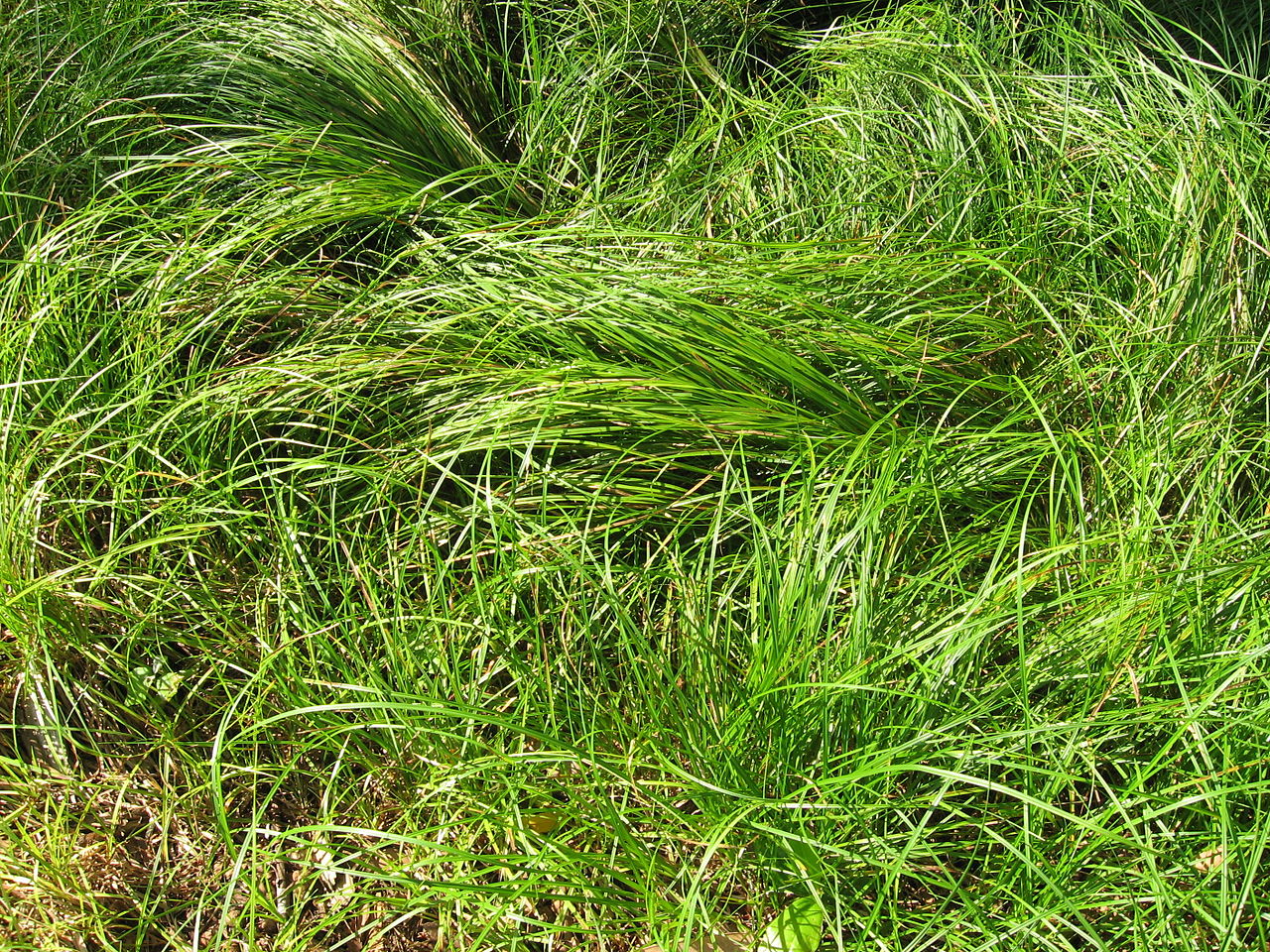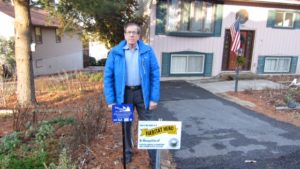
A Carex for Every Condition
November 20, 2018
A True Winter Habitat Hero
January 11, 2019Bill Rappoport
Our fourth Habitat Hero winner is Bill Rappoport, a Cape Conservation Corps board member and active volunteer with CCC. Bill has spent the better part of 2018 installing a Milkweed Garden and converting his yard to native plants. In addition to the many pollinator friendly native plants he has included several species of native milkweed. Milkweed is he host plant for Monarch caterpillars, meaning they can only lay their eggs on milkweed as that is what the caterpillars eat when they hatch.
When the time came for “fall clean-up” Bill took what I call the Lazy Gardener approach and left the stems standing throughout his garden. By leaving the stems he is allowing insects to safely overwinter in the pith of the stalks. This spring, the later the better, Bill will cut the stems back but leave 12-18” still standing as many of them will still house those insects. Once the garden begins to pop up and green out you will not even notice those stems but it will be noticeable to our beneficial bugs. In time the stems will break down and add organic matter (natural mulch) to the garden.
Another “lazy gardener” trick Bill has done is to leave many of his fall leaves in place or rake them into garden areas. The leaves also make a perfect winter home to insects. You will often find birds picking through the leaves to make those insects a tasty meal. If you are lucky enough it may attract a Northern Flicker to this backyard buffet!
A “messy” yard should not be viewed in a negative light, it actually provides the right habitat for so many of the creatures we want to attract: those that benefit our gardens. If we rake away all the leaves and cut back the stems we are disposing of next year’s butterflies and beneficial bugs.
Leaving areas of your yard untouched you will also be providing habitat or shelter for a variety of birds and other wildlife species. A good compromise if you don’t want the “mess” in the front of the house is to tidy up your front gardens and leave the back as untouched as possible. Let the leaves lie, the stalks stand and leave some undisturbed bare soil for our many ground nesting native bees. If the plant material is diseased, remove it but if it is just dead let it decay naturally, adding nutrients to the soil as it does.
This spring when Bill goes back to work on his butterfly garden he will be richly rewarded by his lazy approach to gardening. He will have preserved the larvae, egg masses, hibernating bees, dormant spiders and loads of other hibernating insects. These beneficial bugs will emerge in his garden ready to pollinate his plants, destroy garden pests, nourish the baby birds and provide months of enjoyment as they flit among his native plants.
The following plants are just a few examples of plants that offer winter beauty in any garden:
- Blue Wild Indigo Baptisia australis the large billowy seed heads make a striking winter view
- Joe-Pye Weed Eutrochium spp. They hold their wrinkly leaves atop their tall hollow stems giving the birds a place to perch as they enjoy the seed heads
- Culver’s Root Veronicastrum virginicum birds will delight in the seeds found on this often spooky silhouette in the cold winter months
- Ironweed Vernonia spp. This super tall plant makes a nice accent against the winter skies as it stands up strong in the face of wind
- Goldenrod Solidago spp. There are many species available for a range of conditions with their fluffy seed heads that catch your eye
- Coneflowers Echinacea spp. long after purple has faded the seed heads stand erect and nourish many songbirds, particularly goldfinches
- Native Grasses and sedges amongst which so many have attractive foliage to add winter interest as well as habitat and food source for insects and birds.






